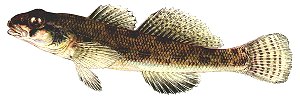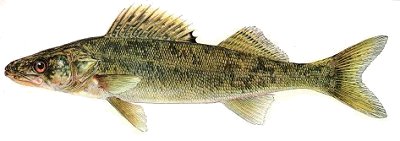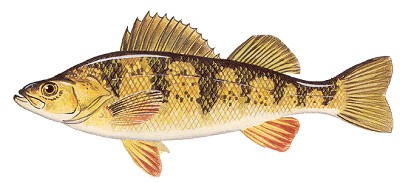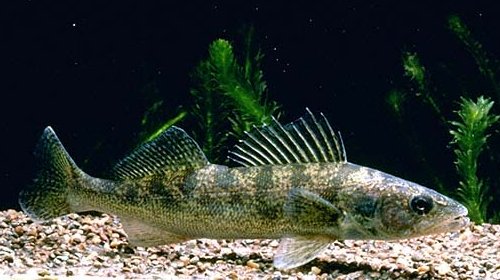Freshwater Perches & Darters
Percidae is the second largest family of fishes in North America, after Cyprinidae (Minnows). They are not related to saltwater Perches, which they superficially resemble.

Darters are diminutive perches that inhabit quiet or slowly flowing waters. They swim in hops and spurts, mainly just sitting on the bottom as they search for the small invertebrates on which they feed. The Tessellated Darter Etheostoma olmstedi ( right, to 4.5" ) is the commonest in the area. Many midwestern species are brightly colored, but we are not so lucky, all of ours are drab.

Walleyes Stezostideon vitrium are enormous darters that grow up to 2 ft and 20 pounds. Although not native to New Jersey, they are widely introduced for sport fishermen. They are aggressive predators of other fishes. Sauger is similar but smaller.

Yellow Perch Perca flavescens grow to 16 inches. They travel in schools, sometimes of hundreds of individuals, and feed along the bottom on almost anything they encounter.


